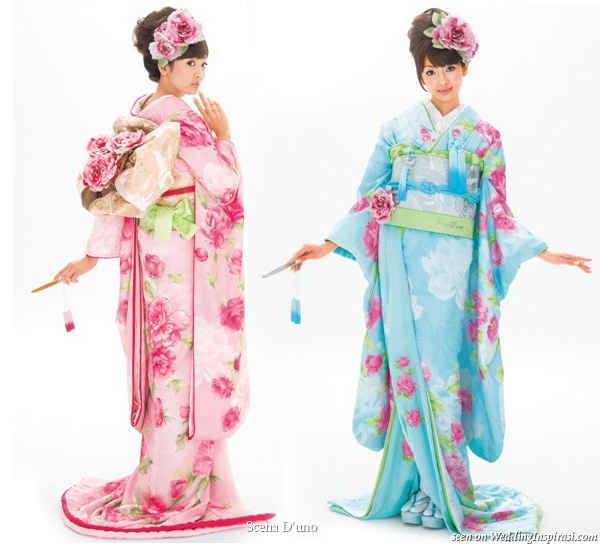
Few images of Japanese culture are as evocative as an elegant lady in a beautiful silk kimono. Although rarely worn nowadays, the kimono holds a special place in the hearts of Japanese and Westerners alike; a symbol of refinement, sophistication and taste. Yet 'kimono' translates simply as 'clothing', and was the everyday attire of all Japanese people for centuries.
In modern Japan you will still see the occasional old lady who has never worn anything except kimono, but most people only don their national costume on special occasions. Weddings, New Year celebrations and highbrow performances are all places where you can see women (and men in their hakama version) wrapped in fine silks; their clothing revealing much about their social status, lifestyles and tastes.
There are many types of kimono and many ways of wearing each type. Each nuance has meaning which can be 'read' by others. Young, unmarried women wear bright, gaudy furisode with sleeves reaching to their ankles. This shows they are old enough to marry, but are still eligible and looking for a suitable bachelor. During the wedding, a heavy uchikake is worn on top. After the ceremony, the kimono is changed for a shorter-sleeved, married woman's version to signify that she is no longer available.
No comments:
Post a Comment